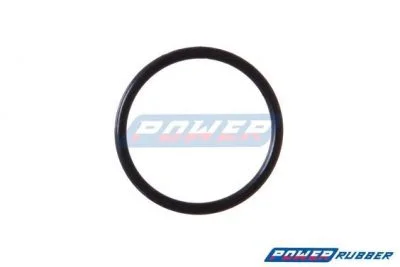Uszczelki O-ring FEP/PFA
Właściwości otuliny FEP/PFA
Uszczelki FEP/PFA składają się z elastycznego rdzenia (z gumy fluorowej lub silikonowej), otoczonego bezszwową powłoką z tworzywa FEP lub PFA. Zapewniają one odporność na agresywne chemikalia, rozpuszczalniki oraz bardzo wysokie i niskie temperatury.
Otulina FEP
FEP to tworzywo sztuczne szeroko stosowane w przemyśle chemicznym, spożywczym i farmaceutycznym. Uszczelki z powłoką FEP działają do 205°C i są odporne na korozję, ścieranie oraz skurcz.
Otulina PFA
Uszczelki z otuliną PFA stosuje się w przemyśle spożywczym, chemicznym, farmaceutycznym i petrochemicznym. Dzięki niskiemu współczynnikowi tarcia zmniejszają zużycie maszyn, a jednocześnie cechują się wyższą odpornością na temperaturę (powyżej 205°C) oraz na przepuszczalność gazów i substancji chemicznych. PFA dodatkowo wzmacnia odporność na ścieranie.
Kluczowe właściwości
O-ringi FEP/PFA są chemicznie obojętne, nie wydzielają gazów i cechują się doskonałą wytrzymałością mechaniczną. Ich niski współczynnik tarcia oraz przewodność elektryczna czynią je idealnymi do zastosowań statycznych.
Zalety stosowania uszczelek FEP/PFA
-
Odporność na substancje chemiczne
-
Odporność na ekstremalne temperatury
-
Odporność na pękanie pod obciążeniem
-
Niska absorpcja zasad, kwasów i rozpuszczalników
-
Możliwość zastosowania w próżni
-
Odporność na korozję
-
Gładka i trwała powierzchnia
-
Niepalność
-
Dostępność w standardzie AS568 i wymiarach metrycznych
-
Niskie tarcie = mniejsze zużycie
-
Dobra odporność na kompresję
-
Możliwość wielokrotnego użycia
Rdzeń elastomerowy – z czego jest wykonany?
Uszczelki składają się z wewnętrznego rdzenia wykonanego z gumy fluorowej (Viton®) lub silikonowej. Zarówno powłoka zewnętrzna, jak i rdzeń mają swoje specyficzne właściwości.
Rdzeń Viton®
Rdzeń Viton® zapewnia odporność chemiczną przy umiarkowanych temperaturach. Wyróżnia się lepszą odpornością chemiczną niż silikon i niską podatnością na odkształcenia.
Rdzeń silikonowy
Silikonowy rdzeń stosuje się przy bardzo niskich temperaturach. Wersja pusta rdzenia silikonowego sprawdza się przy niskich obciążeniach systemowych.
Zakres temperatur
-
Silikon + FEP: −60°C do +204°C
-
Viton® + FEP: −20°C do +204°C
-
Silikon + PFA: −60°C do +260°C
-
Viton® + PFA: −20°C do +260°C
Wady uszczelek FEP/PFA
-
Cienka powłoka nie jest odporna na ścieranie
-
Nie nadają się do pracy dynamicznej
-
Nadmierna kompresja może prowadzić do pęknięcia
-
FEP, PFA i rdzeń elastomerowy mogą pękać przy silnym rozciąganiu
Skontaktuj się z naszym działem technicznym, aby złożyć zamówienie – pomożemy dobrać idealną uszczelkę do Twojej aplikacji.
